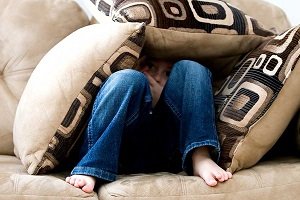How to Get Rid of Children bipolar disorder
TweetBoth children and adolescents can develop bipolar disorder. It is more likely to affect the children of parents who have the illness.
Bipolar disorder (also known as manic-depression) is a serious but treatable medical illness. It is a disorder of the brain marked by extreme changes in mood, energy, thinking and behavior. Symptoms may be present since infancy or early childhood, or may suddenly emerge in adolescence or adulthood. Until recently, a diagnosis of the disorder was rarely made in childhood. Doctors can now recognize and treat bipolar disorder in young children.
Early intervention and treatment offer the best chance for children with emerging bipolar disorder to achieve stability, gain the best possible level of wellness, and grow up to enjoy their gifts and build upon their strengths. Proper treatment can minimize the adverse effects of the illness on their lives and the lives of those who love them.
Families of affected children and adolescents are almost always baffled by early-onset bipolar disorder and are desperate for information and support. In this section of the CABF web site, you will find answers to some of the most common questions asked about the disorder.
Is bipolar disorder in children the same as in adults?
Not as much is known about bipolar disorder in children as in adults; it is difficult to diagnose because many of the symptoms can be caused by other disorders such as attention-deficit-hyperactivity disorder , panic disorder, depression, obsessive-compulsive disorder, or Tourette's syndrome . Children experience faster mood swings than adults, often cycling (changing from mania to depression) many times within a day. Children, more often than adults, exhibit a "mixed" state that is a mix of mania and depression. It is known that pediatric cases of BD are associated with a higher risk of substance abuse and suicide, so proper diagnosis and early treatment are vital for the child's well being.Children under the age of 18 years generally are treated with lithium, but valproate and carbamazepine may also be used. Researchers are evaluating the safety and effectiveness of these and other medications in children and adolescents. Some studies have shown that valproate causes unwanted hormonal changes in teenage girls and polycystic ovary syndrome in some women. Mood-stabilizing medications must be used first, as treatment with stimulants or antidepressants alone can trigger mania or increased aggression. Modifying the child's environment, such as reducing stress, offering nutritional meals, and encouraging good sleep and exercise habits can help stabilize the child's moods.
Bipolar disorder is a serious, chronic illness. As with adults, it is important to have children examined by mental health professionals. For example, psychiatrists are medical doctors who specialize in mental illnesses and can prescribe medications. The criteria for diagnosis of bipolar disorder in children are the same as in adults.
What are the symptoms of bipolar disorder in children?
In early childhood, the youngster may appear hyperactive, inattentive, fidgety, easily frustrated and prone to terrible temper tantrums (especially if the word "no" appears in the parental vocabulary). These explosions can go on for prolonged periods of time and the child can become quite aggressive or even violent.
Children usually have an ongoing, continuous mood disturbance that is a mix of mania and depression. This rapid and severe cycling between moods produces chronic irritability and few clear periods of wellness between episodes.
Symptoms of bipolar disorder in children include:
- an expansive or irritable mood
- depression
- rapidly changing moods lasting a few hours to a few days
- persistent states of extreme elation or agitation
- anxiety
- defiance of authority
- hyperactivity and distractibility
- sleeping problems(little or too much sleep)
- bed wetting and dream terrors
- eating more carbohydrates and sweets
- excessive involvement in multiple projects and activities
- overbearing, extremely oppositional, and have difficulty making transitions,
- strange behaviors
- inappropriate or precocious sexual behavior
- delusions and hallucinations
- Some children experience social phobia, while others are extremely charismatic and and risk-taking.
What are the treatment available for Bipolar disorder in child?
The good news is that with appropriate treatment and support at home and at school, many children with bipolar disorder achieve a marked reduction in the severity, frequency and duration of episodes of illness. With education about their illness (as is provided to children with epilepsy, diabetes, and other chronic conditions) they learn how to manage and monitor their symptoms as they grow older.
Bipolar Disorder - Bipolar Disorder is the form of depressive illness in which the sufferer has periods of being on a high, as well as periods of depression.
Treatment of Bipolar Disorder - Effective treatment is available for bipolar disorder.
What is the cause of Bipolar Disorder? Learn about various causes of bipolar disorder such as family tree, your genes, loss of job, etc.
What are the symptoms of Bipolar Disorder? There are various symptoms of bipolar disorder.
Can Adolescent have bipolar disorder? Bipolar disorder can occur in adolescents and has been investigated by federally funded teams in children as young as age 6.
Can Children Have Bipolar Disorder? Children experience faster mood swings than adults, often cycling many times within a day.
Bipolar disorder - a case study Millions of Americans diagnosed with mental illness lead healthy lives because of information discovered through clinical studies.
History of bipolar disorder - Bipolar disorder has left its mark on history.
Importance of Bipolar disorder diagnosis Diagnosis is important, because it guides treatment decisions.
What is the need of diagnosis in childhood? The importance of proper diagnosis cannot be overstated.
What are the types of bipolar affective disorder? Learn about various types of bipolar disorder.
How can u help ur child and what is the role of parents? Your child can reduce the minor mood swings and stresses that sometimes lead to more severe episodes by adhering to the following tips.


Sometimes crying or laughing
are the only options left,
and laughing feels better right now.

Current Issue
 Self Help Leaflets Take the help of our self help leaflets or booklets. |
 The DG Magazine All about living with depression |


















